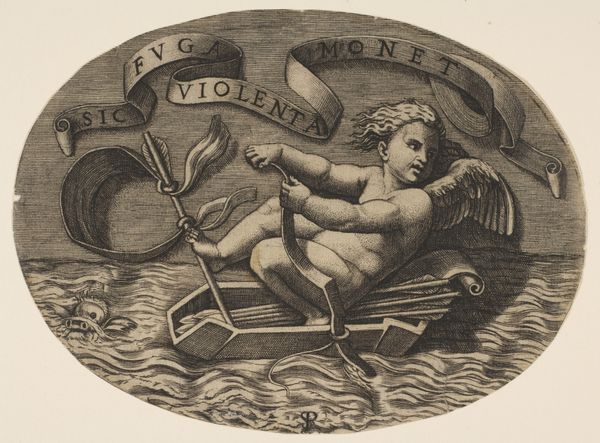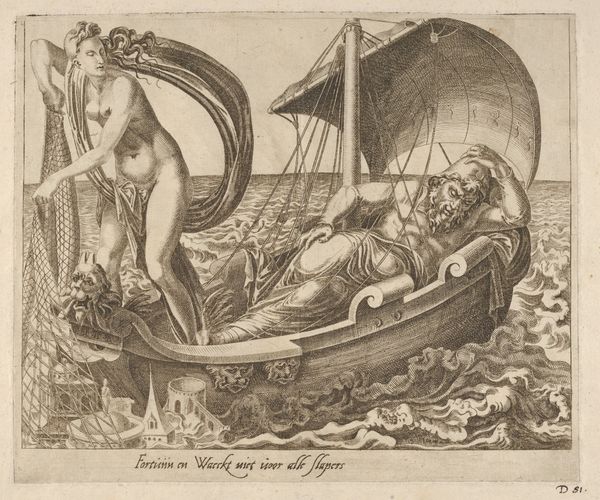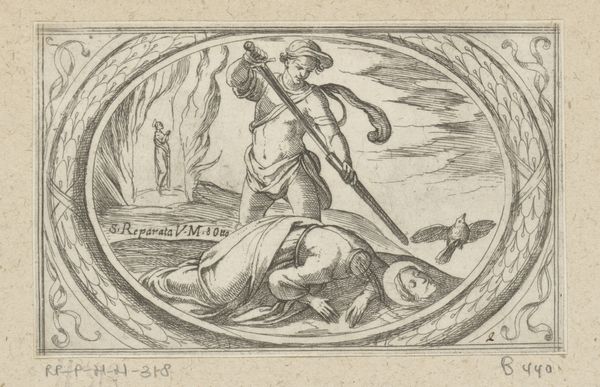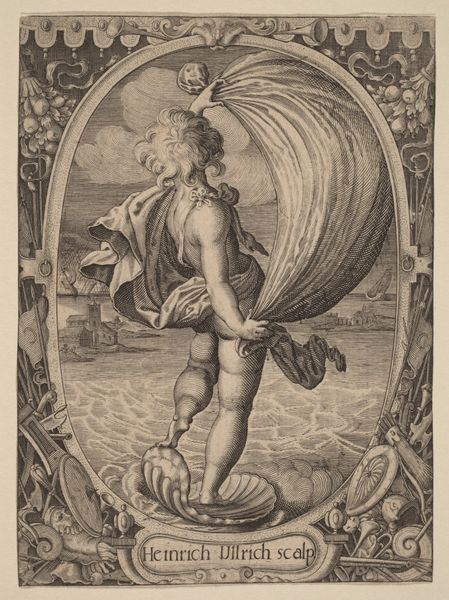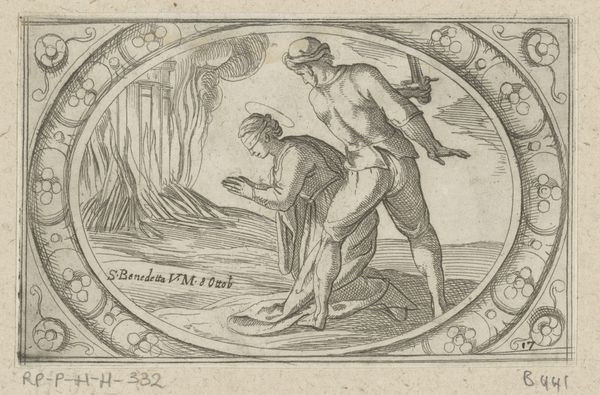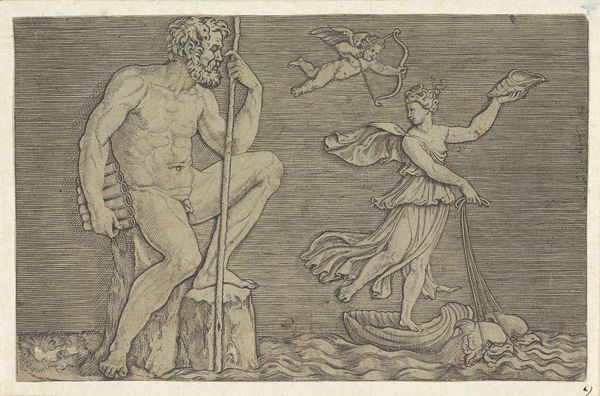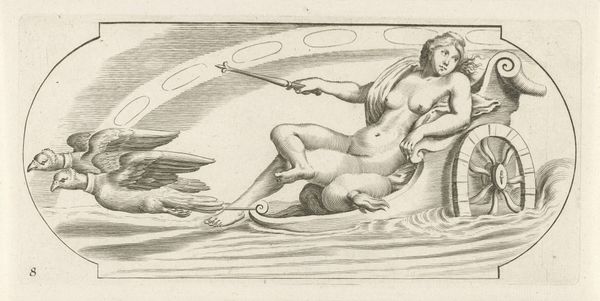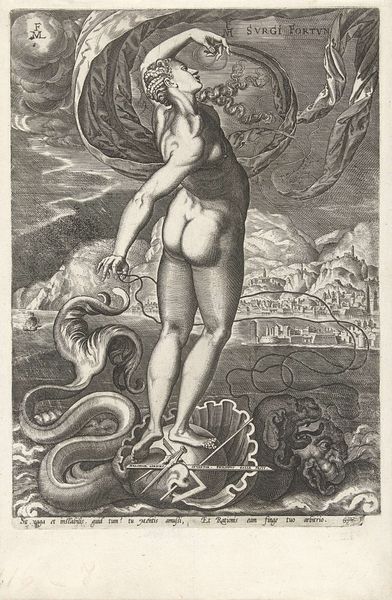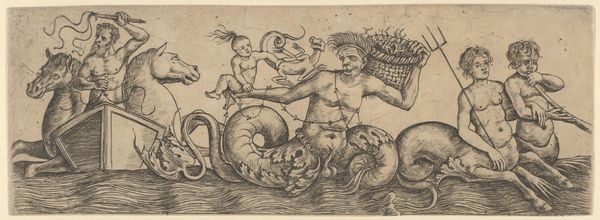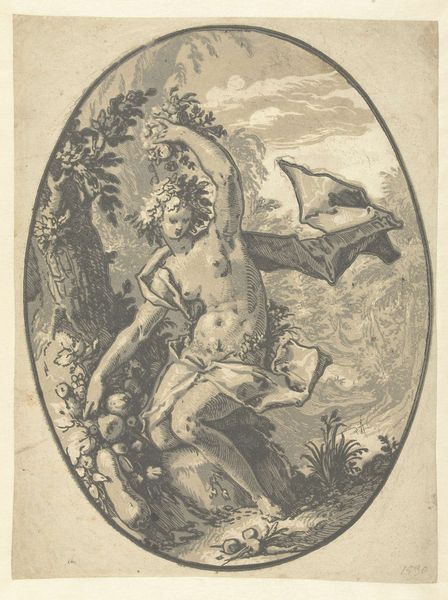
print, engraving
#
allegory
#
narrative-art
# print
#
figuration
#
11_renaissance
#
line
#
italian-renaissance
#
nude
#
engraving
Dimensions: height 123 mm, width 169 mm
Copyright: Rijks Museum: Open Domain
This engraving by Marco Dente, made around 1515-1527, depicts Amor escaping across the sea. The figure of Amor with his bow and arrow symbolizes love and desire, deeply rooted in classical mythology. Here, we observe a reversal, a fleeing Amor. This is connected to the inscription above "Fuga Violenta Sic Monet," which translates to "Violent flight thus he warns". This symbolizes the pain of love, and how love can become something one wishes to escape from. Consider how Cupid, or Eros, often appears in art history, not just as a gentle guide but also as a figure of torment. The image reminds us of the complex, often contradictory nature of love itself: the arrow that wounds, the sea that separates. This engraving captures love's capacity to inflict pain, a theme that resurfaces throughout art history, from ancient sculptures to modern cinema, illustrating love's cyclical dance between ecstasy and agony.
Comments
No comments
Be the first to comment and join the conversation on the ultimate creative platform.
